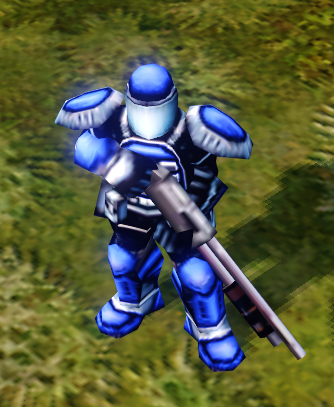
In fact, Peacekeepers were only authorized to use deadly force against foes such as the conscripts, and the Allies have committed to strictly enforcing this yet never had to. This professionalism translates into upstanding battlefield conduct and helps Peacekeepers accomplish their many dangerous responsibilities, including evacuating civilians from potential war zones. The few who were permitted to give interviews demonstrated bravery and modesty in interactions with others. Peacekeepers remain practically anonymous, in no small part due to the visors obscuring their facial features. The Peacekeepers quickly became the backbone of Allied infantry operations, with training headquarters at Fort Bradley in New York City coordinating field training efforts ever since their adoption. Their Legion riot shields and heavy body armor proved effective against small-arms fire, allowing Peacekeepers to hold the line against Soviet attacks, while the Belgian Grummond-8 pump-action shotguns demonstrated their effectiveness against poorly armored conscripts. The program called for deploying peacekeeping forces, equipped with gear emphasising protection of civilians and each other, pitting them against Soviet conscripts.Ĭritics of the program were silenced when Peacekeepers distinguished themselves in battle. The resulting divisions were controversial at first. The program is a result of a collaboration between the United States Army, New York City Police, and select Allied aides and strategists.

More riot police than regular soldiers, Peacekeeprs are few in number, but boast superior equipment and training in an effort to halt the Soviet expansion.

The use of Pacekeeper divisions, once used to bring order to war-torn nations, represents this shift.

While debate rages on about who fired the first shots of the war between the Soviet Union and the Allied nations, the Soviet offensives forced the Allies into a defensive posture.


 0 kommentar(er)
0 kommentar(er)
